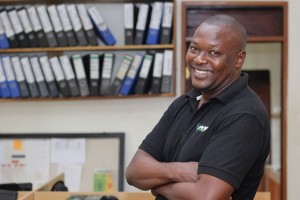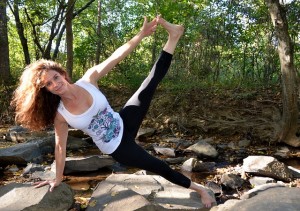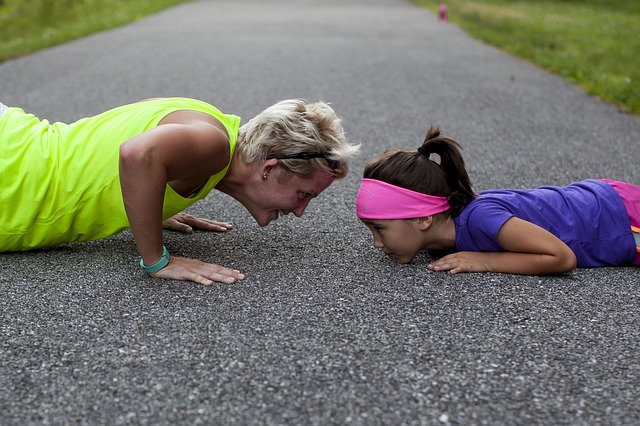Are Your Workout Routines Actually Hurting Clients!
First I want to establish I know you have the best intentions and you truly care about your clients.
This article will dive deep into the actual science and psychology about changing behavior. Stay with me because at the end you will have much more understanding about how to PERMANENTLY change your clients’ lives so they love you, trust you, and refer more people to you. The side effect is you feel more fulfilled knowing that you didn’t just help Suzy Q lose weight or inches, you helped her become happier, more empowered, and more fulfilled herself.
So let get started…
16 years ago, I was on a plane thinking to myself, what just really happened. I just finished lecturing to hundreds of personal fitness trainers about the science of movement and the most effective ways to get people to drop body fat fast.
I felt this empty feeling as if I just went through something important but something was missing. Sure I felt accomplished. Yes, I was able to share some advanced biomechanics of movement and the science of fat loss. Hey, the 142K I spent on education had to be put to good use somehow.
Well it took me 12 years from that day to realize the powerful message my gut feeling (i.e. intuition) was telling me.
I didn’t truly make an impact…
I was so consumed with wanting to help personal fitness trainers I was blinded by what was really happening.
From being in the fitness industry, fitness training or in personal training industry since 1994, I repeatedly saw people in gyms day in and day our not getting results. Many of them would either stay the same or they would go on a program. While on a program (any program) they lost weight. But after weeks, months, and sometimes years, they would gain the weight back. NO weight loss! It was a constant fight and struggle for them.
I understand their pain. I used to measure my foods and used my will power and made sacrifices to avoid eating some of those “bad” foods (this is coming from a kid who used to eat a bag of Oreo cookies a day for his entire food source…). I even used to bring my own food to restaurants so I can socialize yet control my calories…
Before we get to how transformation programs may not solve this problem, let’s discuss what is really happening with these people…
First I have to admit, I should have realized the TRUE problem a long time ago. When I was 14 years old, 2 things happened that changed my life. The first thing was someone said “you have chicken legs” to me. As a teenage boy who already felt awkward, that only fueled my desire to be good enough. So that was big reason why I started lifting weights (aside from looking good for the ladies of course). Second was when a girl I was dating asked “what do you want out of this relationship?”
At the time I couldn’t answer it. Probably because of the raging testosterone in my blood wanted me to shout out “sex”. However, I did reflect on that after the hormones calmed down. I really didn’t know that answer and felt I didn’t know myself.
So I started on a voracious journey to read. My first book at age 15 was Psychocybernetics. I would read or listen to all the self help Gurus on cassette tapes (yes, I am that old) any chance I could get.
It was because of this experience that led to the ultimate big “Ah Ha” moment.
I realized that for me to change permanently, I had to work on changing ME.
Let’s use an analogy here…
Imagine one of your friends named Bob. He is married. However he and his wife Susan have always had this abusive relationship. They argue frequently. Sometimes they go through periods where they get along. You can see from the outside that they individually are good people. It’s their relationship that doesn’t work.
They’ve even tried to work on it. They have read and implemented books on different programs.
Bob works a lot and he feels like he’s overwhelmed. When his fights with Susan get unbearable, he does take action. He searched for some type of solution or program to get Susan to be nicer and the fights to stop. Some of the programs recommend that they take a trip to get away. So they go away on vacation and spend some time together and feel better.
 When they get home and get back to the stresses of life, the fights start again. Then he tries to buy her flowers. She feels happy for a few days then the fights start again. Bob’s thinking “I just need the perfect program and when I find it my marriage will be fixed”. So he tries buying her more expensive gifts. First it’s a ring, then eventually a car. Each time, the fighting stops a bit longer but yet, it always comes back. He feels stuck sometimes and eventually he ignores the problem and becomes numb to his emotions as a way to deal with this.
When they get home and get back to the stresses of life, the fights start again. Then he tries to buy her flowers. She feels happy for a few days then the fights start again. Bob’s thinking “I just need the perfect program and when I find it my marriage will be fixed”. So he tries buying her more expensive gifts. First it’s a ring, then eventually a car. Each time, the fighting stops a bit longer but yet, it always comes back. He feels stuck sometimes and eventually he ignores the problem and becomes numb to his emotions as a way to deal with this.
So you offer to train them to help them through this. You tell Bob, you have the BEST program there is. You are passionate about helping him and you tell him you will transform his marriage in 8 weeks.
So you take Bob under your wing.
On the first day, you get some initial measurements of where his marriage is currently at. You ask him how often he fights with Susan, how long each lasts, how he feels about the marriage. Then you set some powerful goals with him. You say, “we are going to decrease your fight frequency by 90% and the duration by 90%”.
So Bob naturally says “that would be awesome…I’m in”.
So Bob shows up for his first Marriage Transformation training session. You coach him on what to say to Susan to help her feel better. You tell him to measure the duration of your conversation because talking too much would be counterproductive. You tell him the specific words to say because saying these “bad” words would ruin his marriage and that he should stick only with “good” words.
Eventually Bob confesses and says, he’s been wanting to see other women. You tell him he needs to be more determined in his marriage and to use will power to fight those urges. You even give him some NLP mental tricks to not think about and want other women.
After a few weeks, Bob says “I just can’t take it, I really want to date other woman”. So you say “OK you can have these cheat days… On weekends, you can date as many woman as you want. But come Monday it’s back to Susan and those specific words I want you to say”.
(ok you can stop laughing and keep reading on…)
I’m sure you can see from this story Bob has NO CHANCE of having a happy ending (at least not with Susan)
However let’s continue this story. Bob actually feels like your program is amazing! He gets what he wants. His marriage with Susan has never felt better. Based on your recommendation of what to say and how to say it, he reaches his goal of decreasing his fight frequency and duration by 90%. He feels awesome! He says to you “your program is exactly what I needed”.
But then it happens…
Months later, his work schedule increases a bit. He can feel the pressure from work bearing down on his chest crushing him. So he thinks “I’ll just work a little harder and sacrifice a few things to make it through this”. So eventually his words with Susan are not the ones you recommended. Some of the “bad” words come back to his language. He doesn’t have the will power and discipline to continue using the “good” words. Every time he says a “bad” word to Susan, he feels guilty and shame afterwards.
So his marriage starts to crumble again.
Because of this, his weekend “cheat days” of seeing other woman, start to spread into his weekdays. Instead of talking to Susan with the words you recommended, he spends time getting comfort with the new girls. The first time Bob does this, he thinks to himself “I deserve this because I’ve worked so hard and Susan is just so impossible sometimes”. Then after the date, Bob says “dam it! I’m such a failure. I should not have given in to my temptation”.
Over the next few weeks, the feelings of failing build up and eventually Bob just gives up. He’s now “cheating” frequently and the marriage is a disaster.
Can you see the similarity of this story to your client’s relationship with FOOD and THEMSELVES?
Does Bob really need another program? Now, you might be thinking your program is different. It’s more effective. It’s easier to do. It’s more comprehensive. It’s life changing. You have better tools and give more motivation.
Now it may be. Let’s look at what’s really happening and what are the ingredients of TRUE TRANSFORMATION
There is a subtle but huge difference between a BIG change versus a transformation. A big change can and will happen with use of will power, determination, clear goals, motivation, and preferably a coach. I am sure many of your clients have achieved big changes. They feel amazing afterwards. The feeling of losing a large amount of weight is extremely motivating and inspiring. I am not discounting that.
I agree that all the client has to do after these big changes is to stick with the nutrition plan and the workouts and possibly the supplements you have recommended. I get that.
However how likely is it that they do for the rest of their lives…
Before we get to the answer of that question, let talk about Transformations.
A transformation in itself is a permanent change. If we apply this to clients, it’s a permanent change in who they are. In other words, it’s more than just a change in physical aspects. The most important part is a permanent change in their mindset and beliefs.
This is why I felt I failed to make an impact 16 years ago. I delivered only half the solutions. I gave the fitness trainers all the tools to train people as effective and as safe as possible.
(information like 99% of people should never do a sit up, a standard lunge, squat with their backs against something like a wall/bar/ball, upright rows, and the list goes on. You can see details about this at the end)
Because of my own lack of introspection and experience at the time, I didn’t talk about the mental aspect of it and the true problem involving people’s relationship with food and with themselves.
I should have known that the mindset was important from the hundreds of self-help, mindset, and psychology books I read. Looking back I’ve realized it was just not my time to share that with the world at that time.
It’s perfectly OK. We all have our journey and there are lessons that take some time to learn.
Anyway, let’s talk about the steps to getting your clients to completely transform.
First I want to say that a complete instruction manual on this would be an entire book. My intention with this article is to bring awareness to this topic and open your mind to the possibilities of what’s possible with your clients.
I want to share with you an approach that allows for effortless weight loss. If you feel you have to control your food yourself, then you may benefit from the information below. It’s the same process that I have incorporated that has allowed me to eat 26 course tasting meals and still be lean, health, and fit. (yes that’s a whole lot tastier than bringing my own food to microwave…)
STEP 1: To make weight loss a side effect of your program
It’s my opinion that we make weight loss and inches lost a complete side  effect of your training and NOT the main goal. This is like the science of happiness. When you set a goal to get more happiness, you immediately become less happy. Happiness has to be a side effect of intense focus on doing something you are passionate about.
effect of your training and NOT the main goal. This is like the science of happiness. When you set a goal to get more happiness, you immediately become less happy. Happiness has to be a side effect of intense focus on doing something you are passionate about.
So by setting goals like losing 10 pounds or 10 inches, you are saying to your client’s brain “you are not good enough until you are 10 pounds or 10 inches less”.
So set goals on establishing habits, changing behaviors, letting go of what doesn’t serve their health, etc. These goals will automatically make weight loss happen anyway. When a client arrives for training, don’t ask about what they ate, ask about what habits they think they want to work on to be healthier.
By focusing on this you help them improve their relationship with food and with themselves.
Forcing them, pressuring them, and motivating them to eat healthier without deep discussions to bring about awareness of their relationship will make their weight loss hollow and without some life changing lessons.
Step 2: Subtract before you add
 Right off the bat as fitness trainers we tend to want to give the solutions and be problem solvers. So we give the clients a to do list. We give them nutrition plans, We give them exercises, workout routines. However the clients came to you with certain beliefs, habits, and actions that led to their current weight.
Right off the bat as fitness trainers we tend to want to give the solutions and be problem solvers. So we give the clients a to do list. We give them nutrition plans, We give them exercises, workout routines. However the clients came to you with certain beliefs, habits, and actions that led to their current weight.
It’s extremely powerful to help them realize the beliefs that are holding them back from living a life of health not just having health. (There is a difference. Having something suggests you work to get to a destination while living it is a path and journey. In other words, don’t give them the carrot, guide them to live the path of being health). From talking to clients and with fitness trainers over the last 20+ years, I’ve seen clients say things like:
- “I don’t feel like I deserve to be happy”
- “I am addicted to _______ (sugar, fat, deserts, etc..)”
- “I just can’t lose weight”
- “I am too busy”
- “I don’t believe I can do this”
- “I need this to be happy”
There are many more but those are some common beliefs that people can let go of. So have a deep conversation with the client using the most vulnerability you can muster. Don’t just go through the typical process of asking “why” five times to get the root (mainly for closing sales). Have a deep conversation and ask “what beliefs can you identify and let go of to help you achieve success…”. Do this out of compassion and with NO expectations of anything in return.
Once you identified the beliefs, work with the client to revamp those beliefs. Help them realize that beliefs are by choice. Then help them construct new ones to better serve their life and weight loss goals.
(as a side note. Our brains can only perceive 5% of reality. Right now, you are not looking at the specs of dust on your phone or computer, or feeling the sensation of your shirt on your shoulder, or the amount of pressure you feel on your neck. Imagine we are blinded from reality by looking at the world through a black piece of paper with a small hole through it. Where that hole is dictates what you see in life. Your beliefs are what dictates where that hole is. Our goal is to not help our clients look through their current hold to see the “positive”. Our goal is to completely change where that hole is for our clients…)
Step 3: Establish habits not programs
Our beliefs shape our habits. Once you have addressed the clients’  beliefs, work on establishing healthy habits. This does not mean give them an instructional list of what to eat, when to eat it, how to exercise, etc.. I used to do the same thing but realized that approach does little to establish new habits effectively. You ideally wan to identify their current habits, what triggers, them, and then help them find a new routine.
beliefs, work on establishing healthy habits. This does not mean give them an instructional list of what to eat, when to eat it, how to exercise, etc.. I used to do the same thing but realized that approach does little to establish new habits effectively. You ideally wan to identify their current habits, what triggers, them, and then help them find a new routine.
With this process will they be able to establish an effortless way to live healthy and sustain permanent change. Talk to them about triggers that lead to some of their unhealthy behaviors. Once you establish these triggers, help them establish a healthy alternative. Then help them connect that healthy alternative to a reward. The reward is the real reason they did the old habit.
For example, you can’t say “every time you bacon, eat broccoli”. Find the trigger to bacon (maybe breakfast time or the smell of coffee). The reward for eating bacon may be the satisfaction of the salty or crunchy feeling. Then find a different routine to give the same reward. For example, Lean unprocessed meat cooked in coconut oil until crispy or salty kale chips. Same reward but different routine.
There are many books on habits and I recommend “The Power of Habit” on this process.
Step 4: Plant the seed not the tree
In the book The Compound Effect by Darren Hardy, he talks about habits you have in place that don’t pay off until much later. Habits that are like seeds for today but glorious fruitful trees later. A personal example for me was the habit of reading personal growth books. It wasn’t until recently did that habit that started back in 1990 have a profound impact. Over the years that habit has been more and more profound as the tiny choices and perceptions as a result of those books have led to actions that have impacted my life (somehow I ended up hanging out with Richard Branson and traveling the world to eventually help over a million people). I really should thank Kathy for this (the girl I dated when I was 15).
Ok, back to clients…
When you first consult with a client, they have these weeds that provide no room for planting of these seeds.
As you remove the weeds (i.e. beliefs that hold them back) you clear the field for these seeds. When they grow the seeds themselves, they take ownership of the tree that forms. It becomes a part of them. When you go in there and plant a big tree, for them it becomes a burden to take care of. A burden that takes will power and determination.
When you train a client, we have a tendency to give them what they want. It’s what we marketed. It’s what expectations we set. “big results fast… a transformation”.
So we put them on a program. We tell them to eat “good” foods and not eat “bad” foods. We give them a program and tell them about cheat days and the cycle of a poor relationship with food continues. We inadvertently set up a process that feeds the cycle of guilt and shame whenever they deviate from the program.
We make such big changes, in their actions, it like planting a big tree and saying, “here, take care of this”. Let’s consider planting a seed and saying “nurture this with love and gradually see it blossom”.
So consider helping them establish these seeds of young but powerful habits. These habits are small effortless changes that come from a foundation of self love, self care, and self empowerment. When they experience the growth of this seed, they will have a much deeper relationship with it.
This takes us to the next step
Step 5: Make them know they are 100% perfect right now
They come feeling inadequate, needing change, and unhappy. They want a better body. They want happiness.
want a better body. They want happiness.
So we do what they ask. We give them the program and we motivate them. We tell them we WILL give them results. We want them to transform…
So how do we do this from a place of love and strength. How do we let them know they are already empowered, good enough, and perfect now. How do we let them know that this journey they are about to start is about learning something that will serve them in the future and not about being better, thinner, happier. In fact their happiness is a choice and not dependent on their body size or shape.
First we have to believe this ourselves. Then we realize that it’s not our burden to transform them. It’s our gift and our own learning journey in this process. The approach in which we help them transform and their process of transformation is nothing but the practice of knowing ourselves better. That is the beauty of this relationship. It’s an exchange of gifts.
Based on some amazing work by Carol Dweck, I recommend encouraging them on their efforts and not achievements. Instead of saying “great job on pushing that extra weight or losing those inches”, say “ I love how consistent you were, how you never gave up, how you listened to your body (my personal favorite)”.
Again it may be outside the scope of this article to teach this lesson and the process of getting each and every client to realize they are already perfect. However some of the key ingredients to be aware of to help this happen would involve, mediation, being present, letting go, being vulnerable, and 100% pure love from you for them.
Once they are empowered and filled with love they are ready to transform through movement.
Step 6: Fall in love with movement
 I was personally obsessed with progress. I was motivated by the “PR train”. You know the need to set a new personal record of more weight lifted, more reps, less body fat, etc. However there were days where I just felt like I was exhausted from the need to be stronger and BETTER.
I was personally obsessed with progress. I was motivated by the “PR train”. You know the need to set a new personal record of more weight lifted, more reps, less body fat, etc. However there were days where I just felt like I was exhausted from the need to be stronger and BETTER.
That pressure to lift more, to become more, and to do more fed the vicious cycle of “accomplish more to feel better about myself”. Yes, it felt amazing when people said “you look awesome”, “wow that’s a lot of weight you are lifting”, or “man I wish I can look like that”. However there were days where the thought of going to the gym felt like “work”.
That described the first 20 years of my weight lifting experience. I realized that people mainly used exercise, workout routines as a tool to get from A to B (physically and emotionally). Ask yourself “why do I exercise”. If the answer is “to feel.. to get… to …” then you also use exercise as a tool.
Imagine asking someone who loves painting, playing a musical instrument, taking pictures, etc. why they do it, they will likely say “because I enjoy it”. They are “intrinsically motivated”. In other words they do it for the love of it and NOT for an end result.
If I gave you a magic wand to give your clients one power, would you give them a life long love of health and exercise or immediate perfect body now without the love of health and exercise.
One is a destination and one is a path.
So how do we provide this key ingredient for transformation. Again, it would be beyond the scope to teach that here but I can tell you authors like Daniel Pink have identified the key ingredients for intrinsic motivation (in the book Drive). You must provide your clients with Purpose, Mastery, And Autonomy.
Purpose is the easy one. Help them find their BIG why. Mastery may be a bit more complicated. Chasing more weight lifted is unsustainable is a path that leads to accelerated joint wear and tear (i.e. faster onset of arthritis). So I believe choosing a mastery of self or mastery of depth of movement quality is more sustainable and has huge potential for life lessons.
The toughest one is Autonomy. As personal fitness trainers, we are used to telling people what and how to exercise with workout routines. However to have them love exercise and movement life long, you have to provide a place for them to choose their own workout… So think about that. It’s like providing the “programless” program or structured “flow”.
In Summary
OK, it’s been quite a journey up to his point. I look forward to seeing many of you hug your clients in tears not because of accomplishment, but from true inner shift and self transformation at the deepest level. You will know this when you deeply feel that the client has learned, realized, and grown to a place where they put their health first, where they truly love themselves, where they feel 100% perfect they are right now.
If you are a personal fitness trainer I know this choice came from a place of giving, a place of service, and from a place of kindness. No matter how you have approached your training and transformation process, know that it’s a constant evolution of growth and learning. I hope this article provided some food for thought.
I have nothing but love for you. I know your passion will impact many lives. It’s my gift and my passion to provide some input along your journey.
I am grateful for your time. I know it was a bit lengthy.
If you are interested in more please comment below and reach out to me at steve@bodysolutionsinc.com
Oh, if you are interested in learning why 99% people should not do exercises like sit ups, lunges, etc. you can click here to watch some videos about that.
Dr. Steve Young, DPT, CSCS
Emperor of Empowerment at Body Solutions
Awesome Asian At Body Readiness Ranking System
Head Foodie at my life
The lesson of “the thing is not the thing” I learned from this experience.







